Westpac published the following chart showing that the average minimum mortgage repayment has surged since 2022.
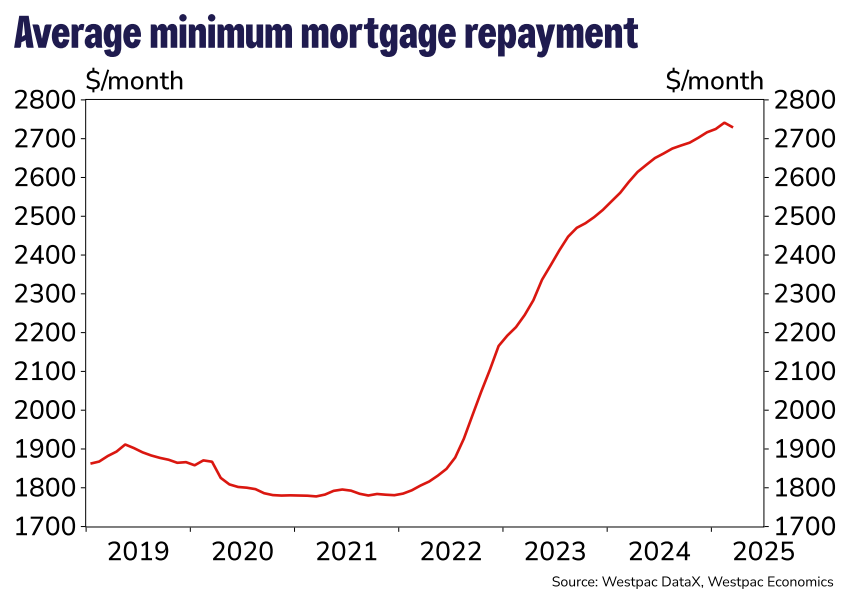
“Over the two years to January 2024, the average minimum repayment increased by 42.2%, or about $754, while average incomes grew just 8.5% (or $641)”, Westpac noted.
CBA also published the following chart showing that average loan repayments have soared by around 60% since the start of the pandemic, whereas average rent payments have risen by around 40%.
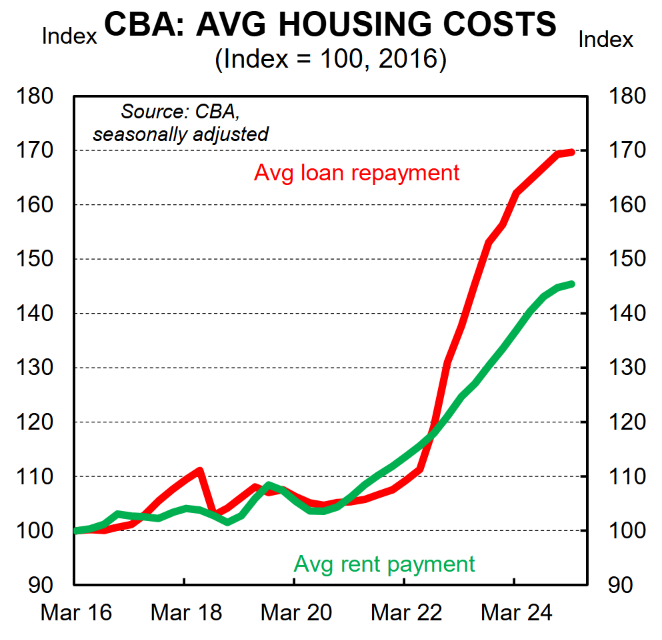
Based on the above data, it would be easy to conclude that mortgage holders have suffered a larger cost-of-living shock than renters.
However, the future looks brighter for mortgage holders than tenants.
The latest interest rate futures pricing predicts that the Reserve Bank of Australia (RBA) will deliver four more 0.25% interest rate cuts this calendar year, with the cash rate forecast to end the year at 3.0%.
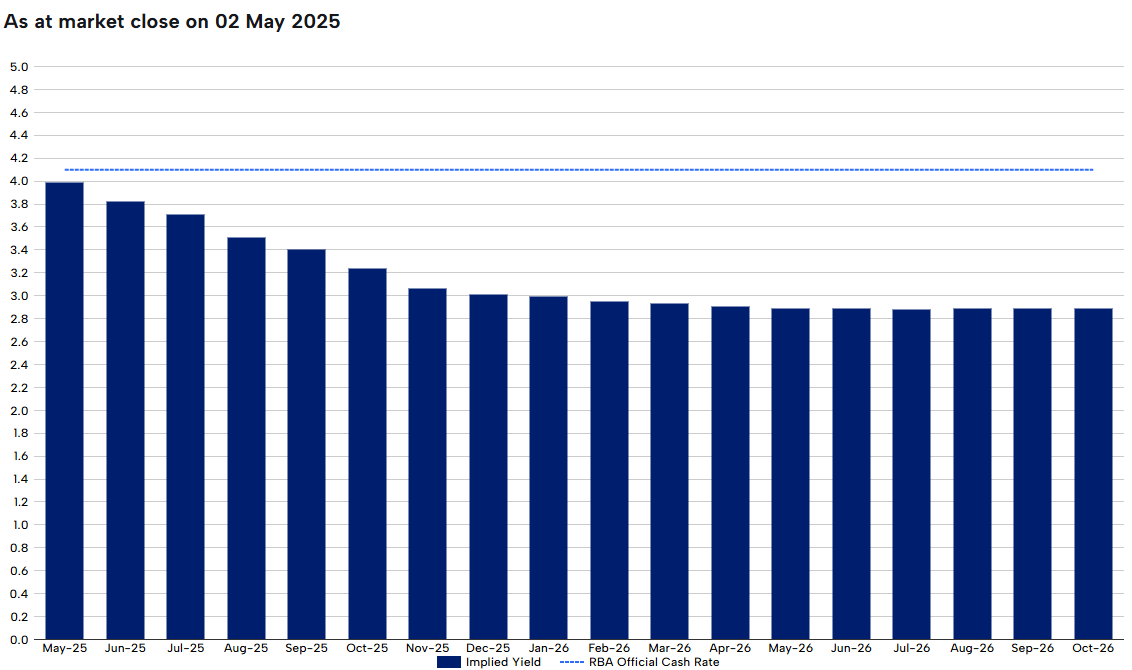
A commensurate 1.0% decline in mortgage rates would obviously lower average mortgage repayments, easing pressure on mortgage holders.
Australian tenants face no such luck, with rents likely to continue rising amid ongoing tight vacancies as population demand outstrips supply.
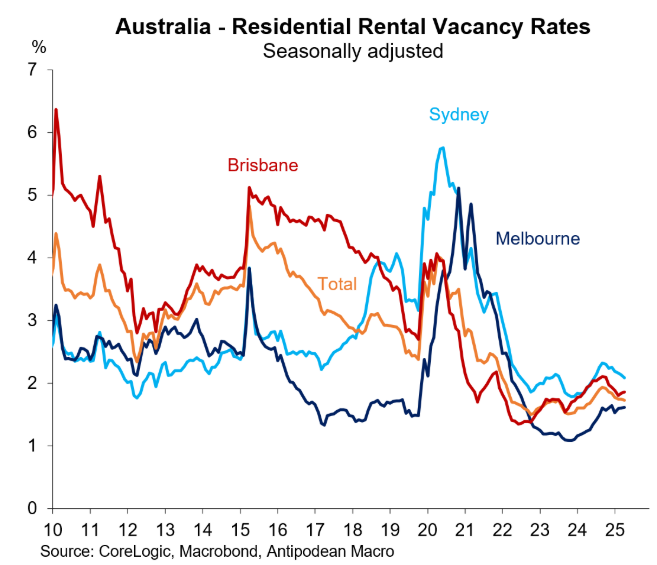
The latest net long-term arrivals data from the Australian Bureau of Statistics, as presented below by Justin Fabo from Antipodean Macro, shows that net migration likely accelerated in Q1 2025 and remains at historically high levels.
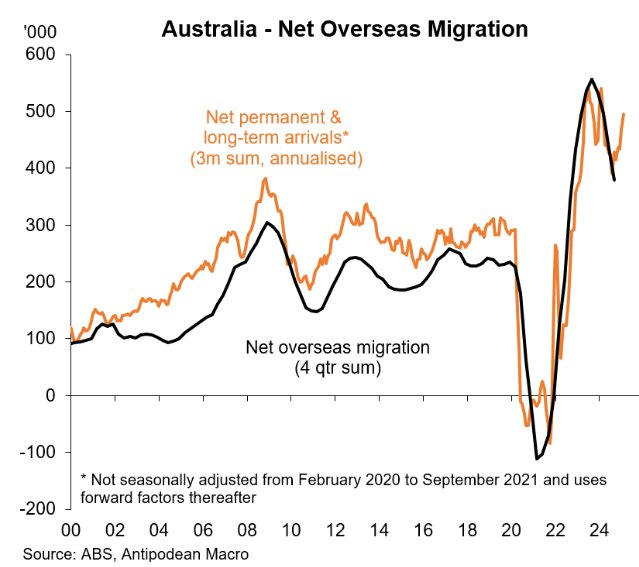
At the same time, dwelling construction rates remain stuck near decade lows:
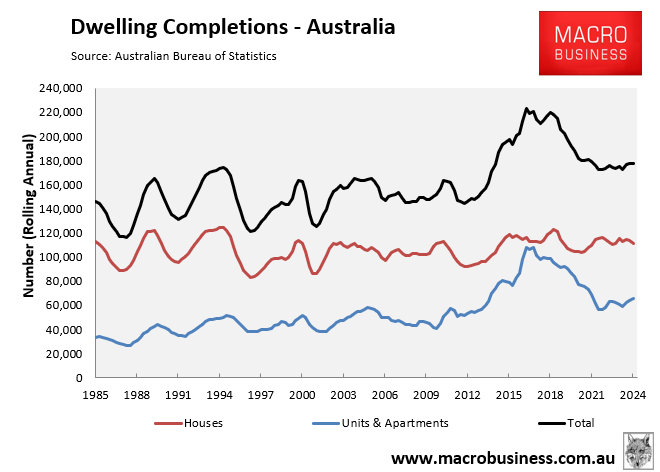
To date, tenants have mitigated the rental crisis by moving back into shared housing.
As illustrated below, the average household size has rebounded, tracking above the levels of the early-to-mid-2000s across the capital cities.
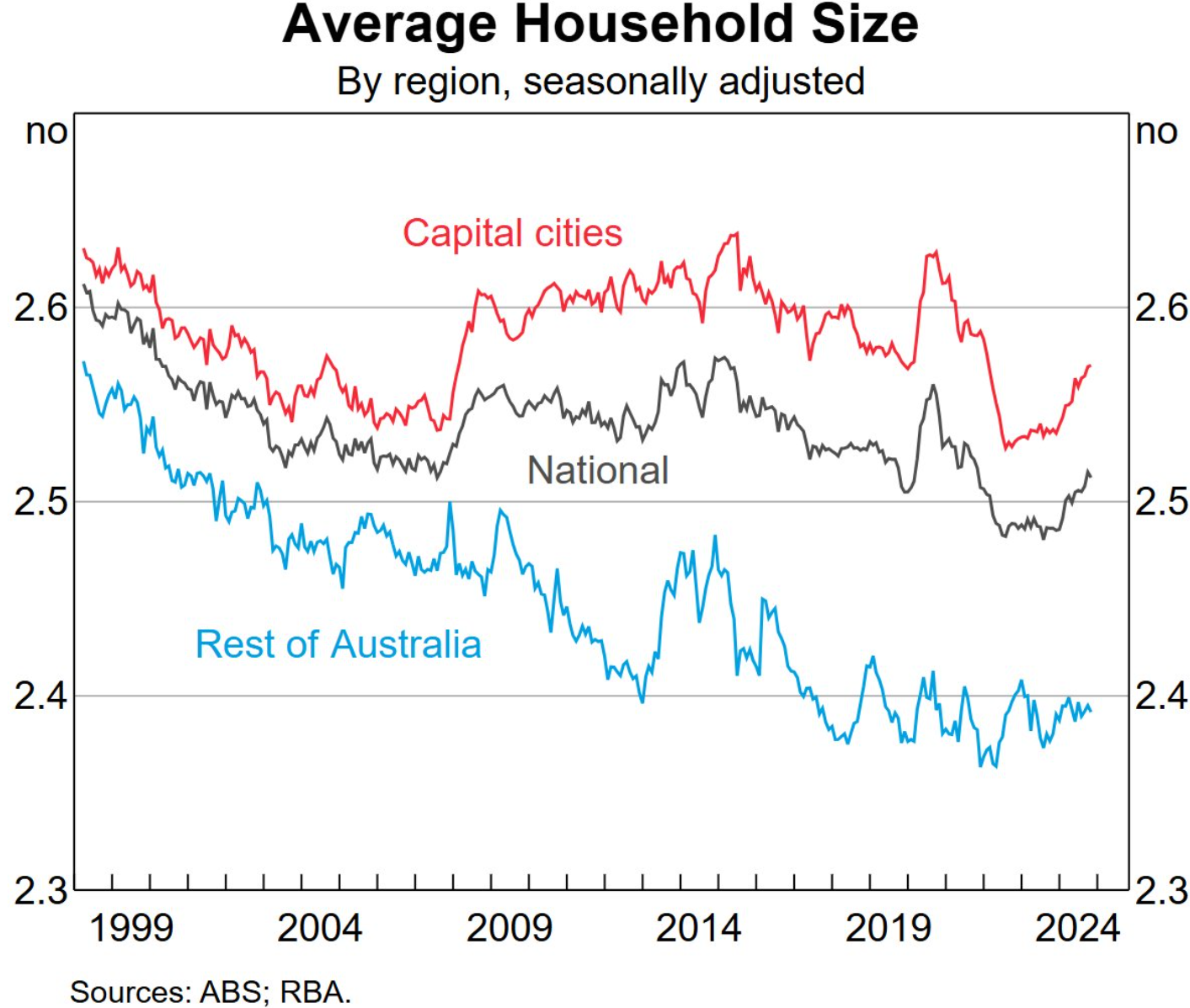
As explained by Alan Kohler last month:
“The root of the housing crisis is that dwelling approvals have been declining for 10 years and immigration has been rising for 20 years, with the result that too many people are now chasing not enough houses”.
The solution, therefore, requires running a significantly smaller migration program where housing and infrastructure construction can keep pace.
Otherwise, tenants will continue to suffer shortages, requiring them to pay higher rents or live in group housing.

